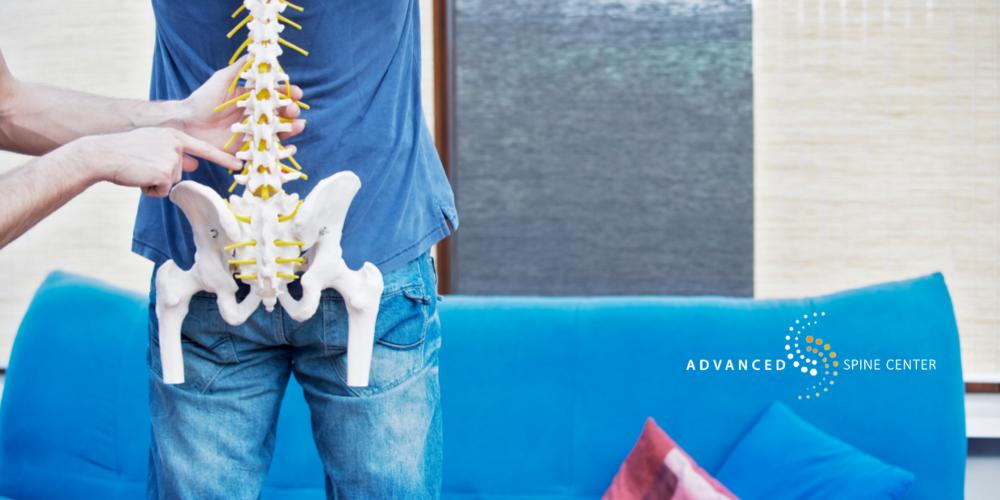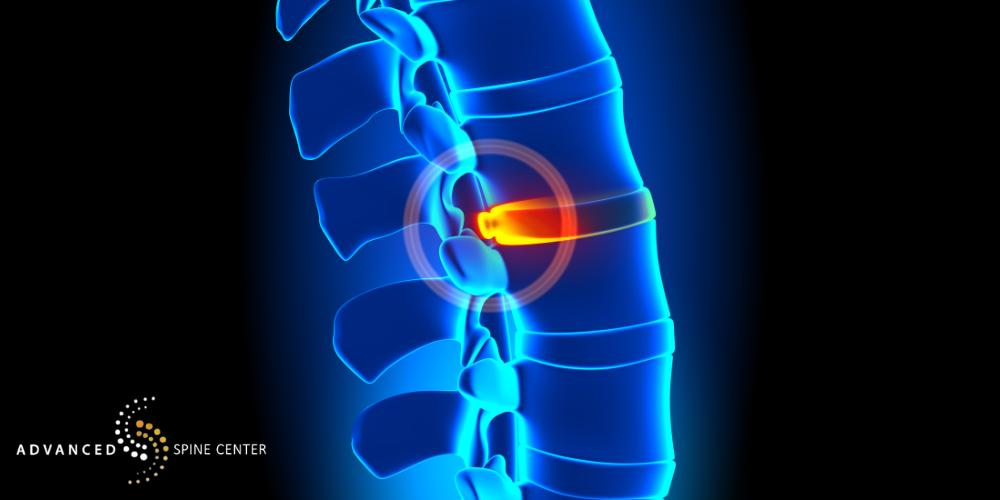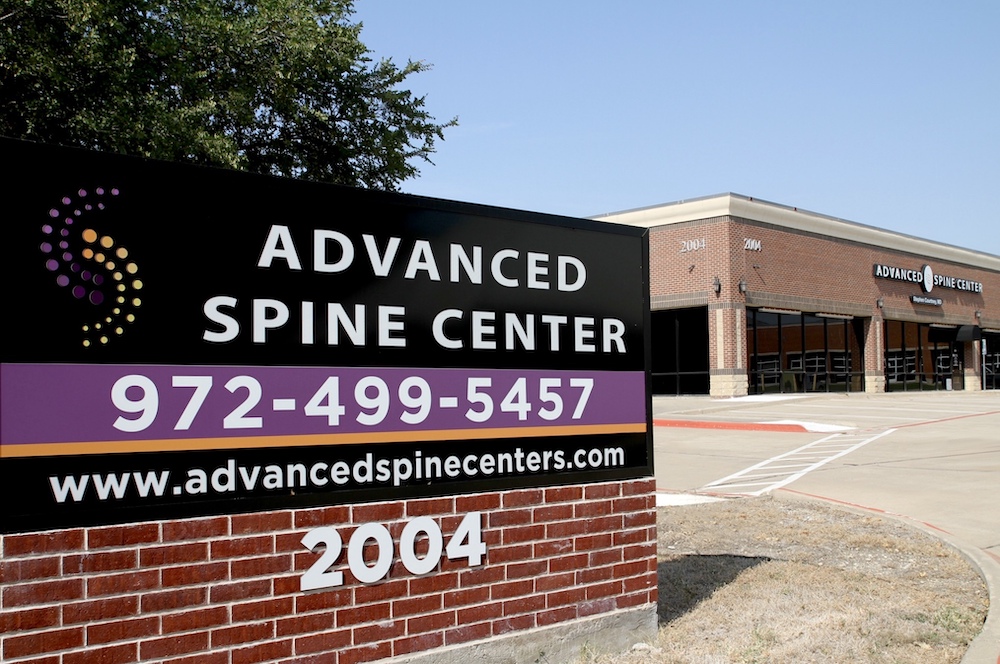Lumbar Minimally Invasive Spine Surgery Frisco, TX
Home > Orthopedic Spine Surgeon in Frisco, TX > Lumbar Minimally Invasive Spine Surgery Frisco, TX
Specialties

At the Advanced Spine Center, we specialize in cutting-edge orthopedic spine surgery, including Lumbar Minimally Invasive Spine Surgery. Frisco residents with back pain that hasn’t responded to conservative treatments may benefit from LumbarMIS. Our expert team of spine surgeons is dedicated to providing you with the most advanced and minimally invasive treatments for various lumbar spine conditions.
To schedule an appointment with Dr. Stephen Courtney about your lumbar spine pain, call our office at 972-499-5457 today. You can also request an appointment by clicking the button below.
What Is Minimally Invasive Surgery (MIS) for the Spine?
Lumbar minimally invasive spinal surgery (MIS) for the spine is a revolutionary approach that allows surgeons to treat spinal conditions. It involves smaller incisions, reduced tissue damage, and faster recovery times than traditional spine surgery.
It employs advanced technology and specialized instruments, enabling surgeons to access the spine with precision and minimal disruption to surrounding tissues. LumbarMIS is particularly effective in addressing various lumbar spine conditions. It can be performed as an outpatient procedure in some cases, but many patients have short hospital stays.
What Conditions Can LumbarMIS Treat?
Lumbar Spinal Stenosis
Lumbar spinal stenosis is a common condition characterized by the narrowing of the spinal canal. This constriction can result in compression of the spinal cord and spinal nerves, leading to symptoms such as lower back pain, leg pain, and numbness. LumbarMIS procedures can help alleviate these symptoms by relieving pressure on the affected nerves and restoring spinal canal space.
Lumbar Herniated Discs
Herniated discs in the lumbar region often cause intense pain and discomfort. LumbarMIS techniques, such as discectomy, are designed to remove or repair the damaged disc, reducing pressure on the spinal cord and nerves, and alleviating symptoms like sciatica and back pain. Those with significant nerve compression could benefit from minimally invasive lumbar spinal surgeries.
Lumbar Spinal Instability
Lumbar spinal instability can result from conditions like spondylolisthesis, spinal deformities, or degenerative disc disease, causing instability in the spine. LumbarMIS offers solutions like spinal fusion procedures to restore spinal stability and relieve pain.
What Are the Types of Minimally Invasive Lumbar Surgery?
At the Advanced Spine Center, we offer a range of minimally invasive techniques tailored to your specific condition. Depending on your specific needs as a patient, we may recommend a minimally invasive spine surgery such as the following.
Minimally Invasive Lumbar Discectomy
A discectomy is a surgical procedure involving the removal of all or part of a damaged intervertebral disc. This minimally invasive spine surgery minimizes tissue disruption and promotes quicker recovery.
Minimally Invasive Lumbar Decompression
Lumbar decompression is a minimally invasive spine surgery that aims to relieve pressure on spinal nerves by removing bone or tissue causing compression. This reduces pain and discomfort while preserving spinal stability.
Minimally Invasive Lumbar Microdecompression
Microdecompression is a minimally invasive spine surgery that targets specific areas of nerve compression, making it an effective option for patients with lumbar spinal stenosis.
Minimally Invasive Lumbar Fusion
In cases of lumbar instability, fusion procedures help stabilize the spine by fusing adjacent vertebrae. Lumbar minimally invasive spine surgery fusion reduces the need for large incisions and decreases postoperative pain.
Minimally Invasive Transforaminal Lumbar Interbody Fusion (TLIF)
TLIF is a specialized fusion procedure that accesses the spine through small incisions in the back, reducing the risk of nerve damage and infections. This method is highly effective in treating conditions like spondylolisthesis.
Benefits of Minimally Invasive Lumbar Spine Surgery

Traditional surgery, while effective, has certain disadvantages when compared to LumbarMIS. For example, LumbarMIS uses specialized surgical instruments and smaller incisions to minimize the damage to the body.
LumbarMIS offers a plethora of advantages, including:
- Small incisions, leading to minimal scarring
- Reduced blood loss during surgery
- Faster recovery times, often allowing patients to return to daily activities sooner
- Lower risk of complications and infections
- Decreased postoperative pain, leading to a shorter hospital stay
- A higher success rate in treating various lumbar spine conditions
Are There Any Risks of LumbarMIS?
Like any surgical procedure, LumbarMIS carries some risks, although they are generally lower than those associated with traditional open surgery. Possible risks may include infection, bleeding, nerve injury, and anesthesia-related complications.
Our skilled surgeons at the Advanced Spine Center take every precaution to minimize these risks and achieve the best possible outcome for your surgery.
How Can I Prepare for LumbarMIS?
To prepare for your LumbarMIS procedure, our team will provide you with detailed pre-operative instructions. You may need to stop certain medications, fast before surgery, and arrange for transportation to and from the hospital or surgical center. Open communication with your surgeon and adherence to their guidance will help ensure a smooth and successful procedure.
What Should I Expect During LumbarMIS?
Lumbar minimally invasive spine surgeries are typically performed under general anesthesia or spinal anesthesia. This depends on your surgeon’s recommendation. You will likely receive a local anesthetic at the incision site. The surgeon will make small incisions, guide specialized instruments to the affected area, and perform the necessary procedure. The minimally invasive approach minimizes tissue damage and blood loss, promoting a quicker, less painful recovery.
Recovering After Minimally Invasive Lumbar Surgery

Recovery after LumbarMIS is generally faster than with traditional open surgery. You can expect to be up and walking within a few hours after the procedure. Physical therapy and rehabilitation will help you regain strength and mobility. Most patients can return to work and daily activities within a few weeks, though recovery times can vary based on the specific procedure and individual factors.
Who Is a Good Candidate for Minimally Invasive Spine Surgery in Frisco?
The suitability for LumbarMIS depends on various factors, including your specific condition, medical history, and overall health. Our team at the Advanced Spine Center will conduct a thorough evaluation to determine if LumbarMIS is the right choice for you. In many cases, this approach is suitable for a wide range of patients, and its minimally invasive nature often makes it an attractive option.
If you’re experiencing debilitating back pain or have been diagnosed with a lumbar spine condition, it’s crucial to consult with a spine specialist. At the Advanced Spine Center, our experienced team will provide a comprehensive assessment and recommend the most suitable treatment plan for your unique needs.
Patients who have tried conservative treatment methods, such as spinal cord stimulators, injections, and others, could benefit from minimally invasive spine surgery.
Call the Advanced Spine Center for LumbarMIS in Frisco, TX
The Advanced Spine Center is dedicated to advancing the field of spine surgery with state-of-the-art techniques like Lumbar Minimally Invasive Spine Surgery. Our commitment to patient care, combined with cutting-edge technology, ensures you receive the highest level of surgical treatment.
If you’re seeking relief from lumbar spine conditions, back pain, or neck pain, contact us today to schedule a consultation and explore the possibilities of LumbarMIS. Your journey to a pain-free and active life starts here. Call our office at 972-499-5457 today.

Request an Appointment
Common Patient Questions
ExcellentBased on 147 reviews
 Robert AliceaThe doctor and his staff were very welcoming and kind ..explained my issues in detail . Will highly recommend
Robert AliceaThe doctor and his staff were very welcoming and kind ..explained my issues in detail . Will highly recommend German CisnerosEvery visit to Dr. Courtney's office is educational and most beneficial. Dr. Courtney and ALL of his staff are the best!
German CisnerosEvery visit to Dr. Courtney's office is educational and most beneficial. Dr. Courtney and ALL of his staff are the best! Jamey DerryberryMy wife and I both go to Dr Courtney for back issues. Great care. Great staff. Great surgical facility and smooth process. LOVE THEM!!!
Jamey DerryberryMy wife and I both go to Dr Courtney for back issues. Great care. Great staff. Great surgical facility and smooth process. LOVE THEM!!! Mark CotterDr Courtney and his staff truly care about my well being. They are the only ones I have found that have been able to help me with my workman's comp claim
Mark CotterDr Courtney and his staff truly care about my well being. They are the only ones I have found that have been able to help me with my workman's comp claim J “JAFO”Does your back hurt? Has your back been hurting, yet no other surgeon can or won't help you; or worse tells you nothing is wrong? You're in the wrong place! I had 4 back operations with no improvement. I had an additional 6 other consultations with "there's nothing wrong with you". The truth was I was probably 2-3 months away from permanent leg and lower back paralysis. He fixed me. I can stand, I can walk. I threw away my crutches of 13 years. If you need back correction - GO SEE THIS DOCTOR! He will fix you, and fix you correctly, if it is humanly possible. Enough said! Go see him. He tells the truth and tells it like it is. 🙂
J “JAFO”Does your back hurt? Has your back been hurting, yet no other surgeon can or won't help you; or worse tells you nothing is wrong? You're in the wrong place! I had 4 back operations with no improvement. I had an additional 6 other consultations with "there's nothing wrong with you". The truth was I was probably 2-3 months away from permanent leg and lower back paralysis. He fixed me. I can stand, I can walk. I threw away my crutches of 13 years. If you need back correction - GO SEE THIS DOCTOR! He will fix you, and fix you correctly, if it is humanly possible. Enough said! Go see him. He tells the truth and tells it like it is. 🙂 Terri StewmanDr courtney and his staff are great! Dr courtney always takes his time with you and I feel he truly cares about his patients.
Terri StewmanDr courtney and his staff are great! Dr courtney always takes his time with you and I feel he truly cares about his patients. Ross WigingtonGreat Dr and helped me multiple times over the years Would recommend to anyone that needs help
Ross WigingtonGreat Dr and helped me multiple times over the years Would recommend to anyone that needs help Bridgette e MentesanaDr. Courtney is knowledgeable and takes the time to really explain what’s going on and explain why you’re in pain and the several options to correct the issue. I never felt rushed and he was on time to our appointment which is such a rare thing. The rest of the office staff was absolutely top notch. They were really down to earth and so nice, you could tell they liked their jobs and were treated well. It was a very welcoming atmosphere. I felt very comfortable and I knew I was in capable hands just by the way he treated his staff and listened to his patients. Highly recommend.
Bridgette e MentesanaDr. Courtney is knowledgeable and takes the time to really explain what’s going on and explain why you’re in pain and the several options to correct the issue. I never felt rushed and he was on time to our appointment which is such a rare thing. The rest of the office staff was absolutely top notch. They were really down to earth and so nice, you could tell they liked their jobs and were treated well. It was a very welcoming atmosphere. I felt very comfortable and I knew I was in capable hands just by the way he treated his staff and listened to his patients. Highly recommend. Marie BentonDr Courtney did my neck surgery and my 360 back surgery. I would not go to another surgeon, he cares about his patients and it shows! His staff is great as well! I trust his opinion and skills 100%
Marie BentonDr Courtney did my neck surgery and my 360 back surgery. I would not go to another surgeon, he cares about his patients and it shows! His staff is great as well! I trust his opinion and skills 100%

